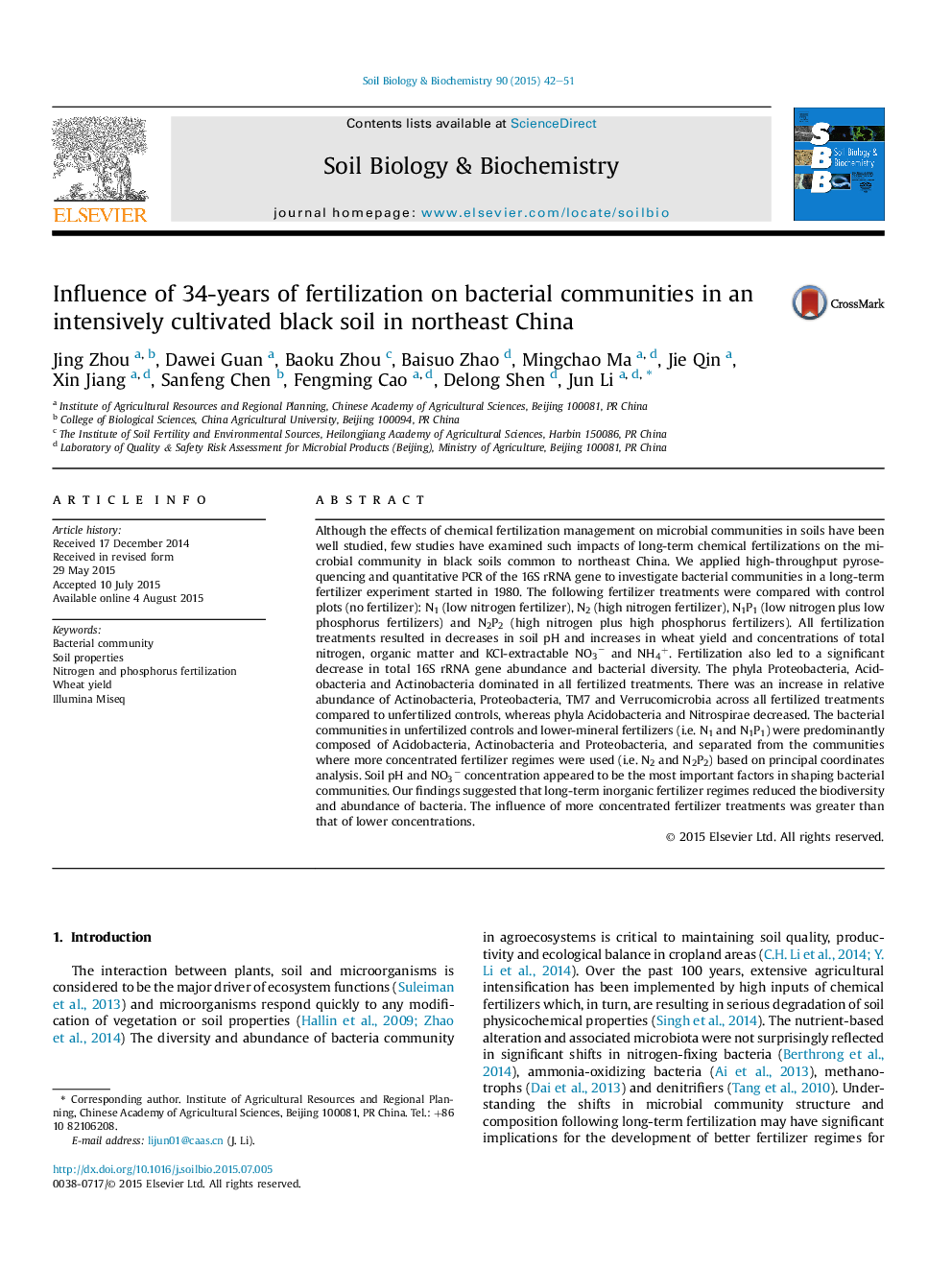| کد مقاله | کد نشریه | سال انتشار | مقاله انگلیسی | نسخه تمام متن |
|---|---|---|---|---|
| 2024377 | 1542594 | 2015 | 10 صفحه PDF | دانلود رایگان |
• We assessed effects of long-term inorganic fertilization on the bacterial and archaeal community structure.
• pH and NO3−NO3− concentration played important roles in shaping the community structures.
• Bacterial and archaeal community diversity and richness appeared to be affected by inorganic fertilization.
• Bacterial and archaeal community composition differed between soils treated with higher and lower concentrations of fertilizer.
Although the effects of chemical fertilization management on microbial communities in soils have been well studied, few studies have examined such impacts of long-term chemical fertilizations on the microbial community in black soils common to northeast China. We applied high-throughput pyrosequencing and quantitative PCR of the 16S rRNA gene to investigate bacterial communities in a long-term fertilizer experiment started in 1980. The following fertilizer treatments were compared with control plots (no fertilizer): N1 (low nitrogen fertilizer), N2 (high nitrogen fertilizer), N1P1 (low nitrogen plus low phosphorus fertilizers) and N2P2 (high nitrogen plus high phosphorus fertilizers). All fertilization treatments resulted in decreases in soil pH and increases in wheat yield and concentrations of total nitrogen, organic matter and KCl-extractable NO3−NO3− and NH4+NH4+. Fertilization also led to a significant decrease in total 16S rRNA gene abundance and bacterial diversity. The phyla Proteobacteria, Acidobacteria and Actinobacteria dominated in all fertilized treatments. There was an increase in relative abundance of Actinobacteria, Proteobacteria, TM7 and Verrucomicrobia across all fertilized treatments compared to unfertilized controls, whereas phyla Acidobacteria and Nitrospirae decreased. The bacterial communities in unfertilized controls and lower-mineral fertilizers (i.e. N1 and N1P1) were predominantly composed of Acidobacteria, Actinobacteria and Proteobacteria, and separated from the communities where more concentrated fertilizer regimes were used (i.e. N2 and N2P2) based on principal coordinates analysis. Soil pH and NO3−NO3− concentration appeared to be the most important factors in shaping bacterial communities. Our findings suggested that long-term inorganic fertilizer regimes reduced the biodiversity and abundance of bacteria. The influence of more concentrated fertilizer treatments was greater than that of lower concentrations.
Journal: Soil Biology and Biochemistry - Volume 90, November 2015, Pages 42–51
